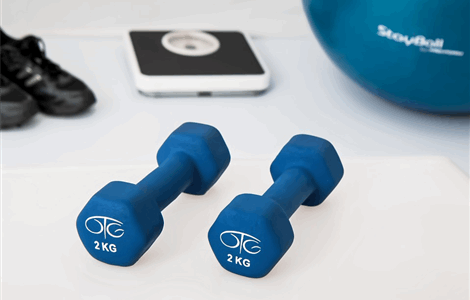
Lower back exercises help stabilise and support the upper body. They may also reduce lower back pain. This article provides information on a variety of strengthening and stretching exercises that can be performed for the lower back, as well as the signs to look out to call our Home GP doctor in Manilva for lower back pain.
Strengthening exercises
The subsequent exercises can aid in strengthening, stabilising, and supporting the lower back. However, our home GP doctor in Manilva for lower back pain recommends stopping any exercise if you experience acute or increased levels of back pain.
Glute bridge
The glute bridge is an exercise that targets the gluteus maximus, which is the largest of the gluteal muscles (also known as glutes) that are responsible for the formation of the buttocks. When a person stands up from a squat, for example, they are activating this muscle because they are extending their hips. It also helps with external rotation, which is when the knee and hip open away from the body, as well as abduction, which is when the leg is lifted away from the body. Both of these movements are assisted by it.
Lower back pain has been linked by researchers to having weak gluteus maximus muscles, as stated in a review published in 2019. Increasing the strength of these muscles may be able to help prevent this symptom.
By performing the dual role of a stabiliser and a mobilizer, the glutes are able to contribute to the overall stability of the lower back. When the knees are extended, having strong glutes can help stabilise and support the lower back as well as the hips, and they can also contribute to the stabilisation of the knees.
Bird-dog
The bird-dog strengthens the muscles in the buttocks and thighs. In addition to that, it strengthens the back extensor muscles, which are the ones that attach to the back of the spine and give a person the ability to stand, bend, and lift things.
Plank
The plank exercise targets the abdominal muscles primarily, but it also engages the arms, shoulders, hip flexors, and feet, which makes it an effective exercise for strengthening the body as a whole. Additionally, the back extensor muscles and the quadratus lumborum, which is the muscle located the deepest in the back, may be activated by this position. It reaches all the way down to the pelvic bone from the lowest rib.
Side plank
The side plank is a variation of the traditional plank that targets the quadratus lumborum in addition to the gluteus medius and tensor fascia lata (TFL) muscles. These muscles contribute significantly to the stability of the hips.
Abdominal drawing-in maneuver
Having strong abdominal muscles helps to support the spine and maintains the correct alignment of the hips. Lower back pain may be the result of insufficient core strength brought on by a lack of abdominal muscle strength.
The transversus abdominis (TA) is a muscle located deep within the abdominal cavity that works to support the spine. One exercise that can assist in the strengthening of the TA is known as the abdominal drawing-in manoeuvre (ADIM).
Abdominal crunches
Exercises like crunches help develop a strong core, which in turn provides better support for the spine and alignment for the hips.
Home GP doctor in Manilva for lower back pain
Combining different types of exercises, such as those that strengthen the lower back and those that stretch it, can help improve the lower back's strength, stability, and flexibility. Because of this, it's possible that doing so will help alleviate and prevent lower back pain.
If any of the back exercises above make back pain worse, it is vital to stop doing them immediately and contact our home GP doctor in Manilva for lower back pain